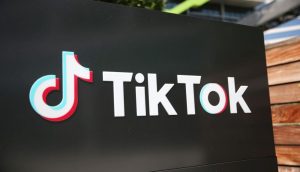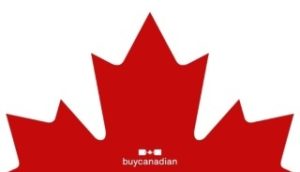
Pictured L-R: The Globe and Mail’s Andrew Saunders, Subaru’s Ted Lalka, Samsung’s David Allard
Today, many brands are struggling to strike a balance between short-term, lower-funnel marketing tactics and emotion-driven, brand-building media.
It’s already a difficult tightrope to walk. But when you throw in problematic measurement standards, how can marketers keep up with the changing pace while also being seen as leaders in the media landscape?
As part of strategy‘s ongoing roundtable series, we sat down with four marketing powerhouses and one media agency veteran to discuss the challenges that come with the changes. In part one, marketers discussed the need to be agile, and the different insights that are fueling their media plans. In part two, our experts dove further into what it really means to be an agile marketer, and where some of the media partners are falling flat.
Present at the table were Susan Irving, senior director of marketing at PepsiCo, Ted Lalka, VP of product planning and marketing at Subaru, Andrew Saunders, CRO at The Globe and Mail, David Allard, CMO of Samsung, Rob Young, SVP of marketing sciences at PHD Media and Antoinette Benoit, SVP and CMO of McDonald’s Canada.
In the context of the TV Upfronts, what are some concerns that are making you hesitant in how you plan your spend?
The Globe and Mail’s Andrew Saunders: The economics of television is very interesting. Because the viewership levels are declining, and rates are increasing.
 PHD’s Rob Young: It’s the most bizarre thing. And it’s because the demand is falling off slower than the supply. I’ve never seen anything like it in the 40 years I’ve been in this business.
PHD’s Rob Young: It’s the most bizarre thing. And it’s because the demand is falling off slower than the supply. I’ve never seen anything like it in the 40 years I’ve been in this business.
Saunders: And the measurement of that hasn’t kept up with the measurement of digital either, has it? Whether you agree or disagree with the MRC standards and measurement of digital, at least you know if you have a viewable impression, that’s a viewable impression. ThinkTV came out with their analysis of the market with Accenture on a big media modelling project, didn’t they?
Young: Yes, and in their presentation they showed that the television expenditure per capita in Canada on the global ranking was like #20. And digital, or search, expenditure per capita in Canada was like #5. That just shows how far the branding investment is in Canada.
Saunders: We talk about the industry growing at 2% or 3% and digital growing at 15 to 18%, while social is growing at 30 to 40%. But how do you reinvest that into emotion-driven media? It goes back to the question of brand-building versus performance – what else can the Canadian market do to bring more validity to the investment towards brand?
Subaru’s Ted Lalka: Part of it depends on the culture of the organization you work for. If you’re working for a company that has a very long-term view, then brand is important. But if you’re living by sales every month, and three-quarters of the year you’re down and cutting staff, you’re going to try to get that [sales] hit one more time.
Samsung’s David Allard: I think we are in a market of sales subsidiaries driving short term goals. The industry’s upper funnel partners want to support the business but they have to look at the reality of how business decisions are being made by clients across the country. We have to be much more agile than a few years ago.
PepsiCo’s Susan Irving: For efficiencies too – you want a long-term plan so that you can get procurement savings and then drive your procurement savings into your short-term and be more agile, right? Television you have to buy far out to get your procurement savings, digital you can buy on a much shorter term.
Young: You know, the principle of agility is very popular right now. But when you do a valuation of a television campaign, you don’t know how your campaign has done until after three or four months. That is not agility. Agility is knowing a couple of weeks after the campaign ends whether you’ve achieved your goals or not. All of media, whether its long term or short term, all of it requires agility. Some media are more suited to provide that agility and some aren’t – all of them could be, but they’re not doing it. And I think that’s been one of the failures of our industry, especially the TV industry.
How can that agility be improved?
 Young: You could code all of your commercials, you could monitor the weight levels that you’re getting on a weekly basis and then renegotiate, but that requires some initial spend. There are companies that code commercials and monitor, and that allows you to do post-buys immediately after the campaign ends. But it’s just not an industry practice today.
Young: You could code all of your commercials, you could monitor the weight levels that you’re getting on a weekly basis and then renegotiate, but that requires some initial spend. There are companies that code commercials and monitor, and that allows you to do post-buys immediately after the campaign ends. But it’s just not an industry practice today.
Saunders: I do think that marketers can set the pace of the industry more so tomorrow than they do today. I think there are certain expectations, whether they’re holding the Googles and the Facebooks to higher account because of transparency and authenticity, or driving better measurement and technology on the broadcast side – I think marketers have a power and influence, and I do wonder, as a sector, do they leverage that properly? They’re the ones that spend the $13 to $15 billion in marketing. They’re the ones who are accountable to the bottom line. So I think that pace needs to be set by marketers. They can do more to set the standards of what’s expected from the ecosystem.
Allard: I do think there’s an opportunity for us to leverage the intimacy of marketers a lot more closely. Not necessarily banding forces against a common enemy, but I do think that it’s a small community and we should leverage that more than we do.






















